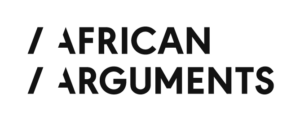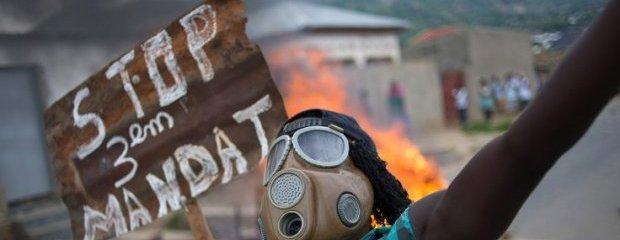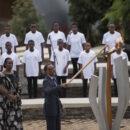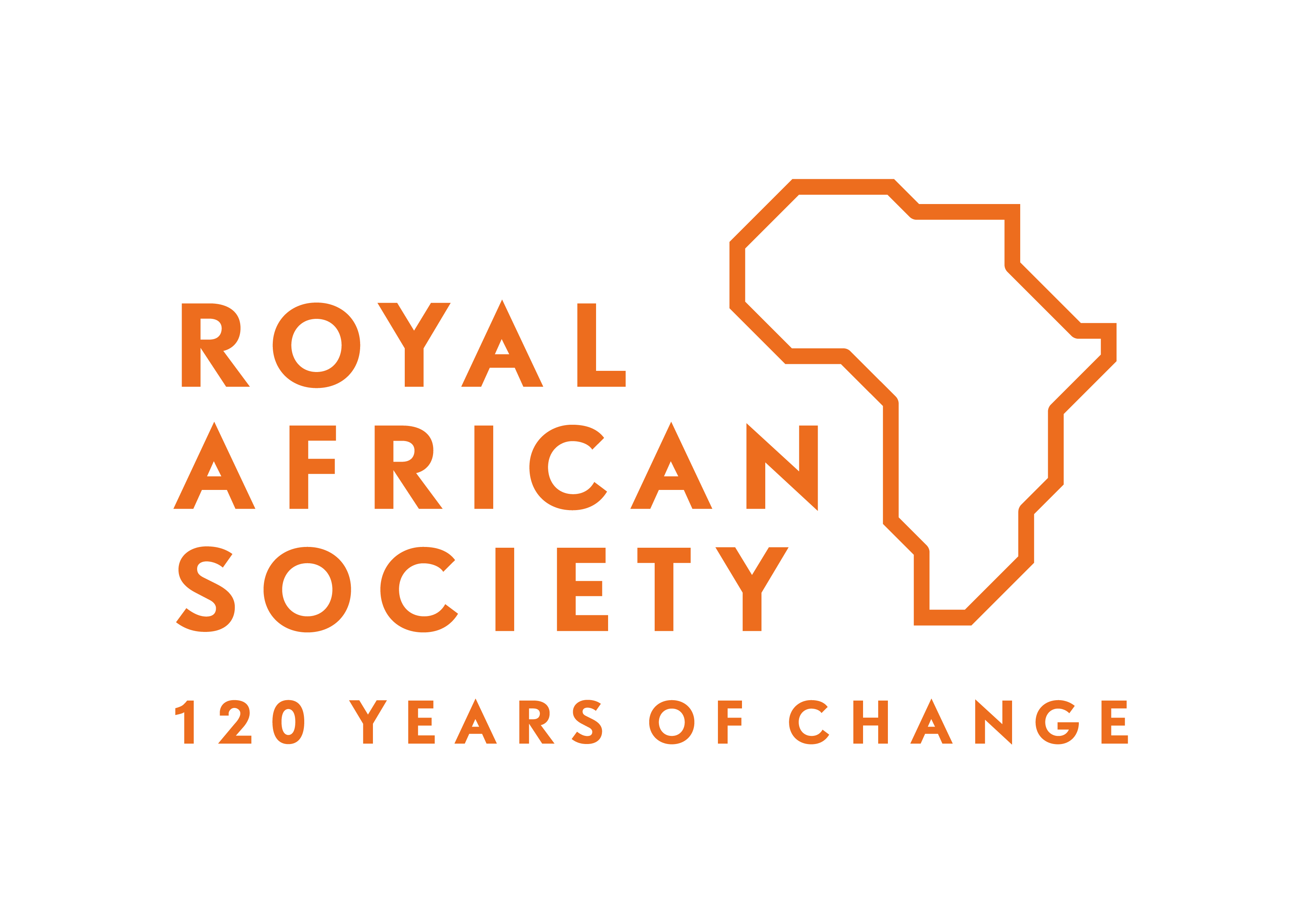Behold the New Sudan
The New Sudan (al Sudan al Jadiid) of the late Dr John Garang was a vision of a Sudan of equality and non-discrimination in which the provinces””the margins of the South, west, east and north””all enjoyed a fair share of power and resources. Dr John’s vision was shaped by his prescient analysis of the fatal flaws of the 1972 peace agreement. And so his idea of the New Sudan was, in part, a vision of the “˜Addis Ababa Agreement plus'””the “˜plus’ meaning first that the South had a proper stake of central power, and second that all other regions of Sudan enjoyed those rights and wielded those powers. In practice, during the long years of war in the South, the Nuba Mountains and Blue Nile, “˜New Sudan’ meant those areas controlled by the SPLA. The dream of a “˜New Sudan’ in line with Garang’s manifesto of national transformation is powerfully attractive to many Sudanese, including many Darfurians. The advocates of Dr John’s vision argue, correctly, that the “˜New Sudan’ remains untested. But it is possible that the project was buried along with its visionary three years ago. And we can never turn back the clock to the Sudan of 35 years ago, which nurtured the hopes of a wonderful combination of national integration and local integrity.
The New Sudan (al Sudan al Hadith) of Dr Hassan al Turabi was a starkly different vision of a new Islamic personality, an ethical transformation of the country in line with the sheikh’s interpretation of Islam. Although Turabi is famous for being a political chameleon, his project also betrays its roots in the 1970s””the years of when Islamism appeared to offer a progressive alternative to Arab nationalism and socialism. His central vision was that in order to create his Islamic state, he needed an Islamic society, and that in turn needed new Muslims. Of course, the great majority of Sudanese Muslims didn’t see anything wrong with the way in which they had been practicing their faith for generations. In practice, Turabi’s “˜New Sudan’ was discredited by the violence, intolerance and corruption that accompanied the Islamist experiment of the early and mid-1990s. Though its mentor is alive and active, this political project was interred even before Turabi was removed from power in 1999.
Sudan’s national debate is conducted in the shadow of these two “˜New Sudans’ and the political giants who created them. The Comprehensive Peace Agreement of 2005 allowed for a six-year interim period in which the people of the Sudan would develop a national democratic system and constitution, with the aim of “˜making unity attractive.’ This project””of elections, constitutional reform, and a peace dividend””should be about far more than building roads and schools, it would be an opportunity for all Sudanese to discuss the future of their country. During the long drawn out peace processes of that began in the mid-1990s and culminated in the CPA, the Southerners had the opportunity for a South-South peace process and dialogue. The Darfurians have demanded the right to something similar””and the Darfur Peace Agreement contains provisions for a Darfur-Darfur Dialogue and Consultation. But we are still awaiting the Sudan-Sudan dialogue. The hope for a free, inclusive and participatory national debate during the interim period remains unfulfilled.
Sudanese are not, of course, silent. Political debates are never silences. These debates are dominated by the generation that came of age in the 1960s and “˜70s””in fact several major political parties have not changed their leadership for twenty or thirty years. And many younger leaders often speak with echoes of their elders’ voices. Darfur’s young SLM leaders for example, have little to say that their elders did not say better two, three or even four decades ago. One consequence of this is that when NCP leaders imply that there is no alternative to Omar al Bashir’s presidency””if he were to go the result would be the collapse of the state itself with incalculable consequences for the Sudanese people and the entire region””they may not necessarily be wrong. Does the alternative leadership consist only of these recycled politicians from the last forty years of the country’s democratic and military twists and turns?
The reality of these debates is that the “˜new’ in the “˜New Sudans’ is rather stale. It is as much nostalgia as manifesto. It speaks to the dreams of a generation that has grown up with war, extremism and displacement. But if the visions of the New Sudan are to be relevant to the economic and social realities of today’s Sudanese, the leaders need to put in some hard intellectual labor to appreciate the irreversible changes that have overtaken the country.
A different New Sudan is unfolding before our eyes. It is one that none expected. It appears in no political manifesto. It is not debated by political leaders and rarely discussed by intellectuals.
One dominant feature of the real new Sudan is urbanization. According to UN population estimates, around 2015 half of all Sudanese will be urban residents””and if we include displaced persons it could happen some years earlier. The proportion of the national income that goes to urban dwellers has probably passed 75% already.
The actual new Sudan is not only urban, it is metropolitan. Politically, economically and socially, the new Sudan is greater Khartoum. The politics, economics and social life of the peripheries is already managed by leaders who live in Khartoum. The nation’s entire elite either lives in the city or maintains close links with family members who live there.
The actual new Sudan is global. Khartoum is not only an international city, it is a globalized one. Despite diplomatic isolation and sanctions, Khartoum is as international as it ever was. The professional diaspora to the Gulf states in the 1970s, when Sudanese professionals migrated en masse to provide the skills to manage the oil boom, was followed by the vast dispersal of refugees from all parts of the country in the 1990s””none of whom severed their links with the home country. Sudanese families from north, south, east and west are now international, with members scattered in foreign countries, in their historic home towns and villages, and in the hub of these networks””Khartoum. The influences on modern Sudan come from places such as Malaysia (where many go for higher education) and Spain (the home of Sudan’s most famous female singer, Rasha) as well as the more traditional locales of Cairo, Kampala and London.
Khartoum is a modern and metropolitan city in unexpected ways. One of the least-remarked facts of the last twenty years is the extent of women’s education””about half of all university graduates in the country are women. While both the SPLM and Islamist versions of the New Sudan paid lip service to a role for women, the actual New Sudan is being redesigned by educated women in quiet but radical ways.
The most important distinction in the country today is between those who own land in the capital, have access to hard currency, and who educate their children either abroad or to an international standard in Khartoum. Those who win on all three counts are shaping the future of Sudan. When the current generation of leaders passes on, it is surely the children of this globally-connected elite who will inherit the country. Those who don’t–the vast majority–are the losers in the actual New Sudan. How to manage the challenge of inclusion is one of the biggest tasks facing Sudan’s rulers. The habitual way of doing it is to allow wealth to trickle down, partly through a free market (that operates to the advantage of those close to power), and partly through a patronage system–and to suppress armed dissent with widespread violence. As Sudan becomes an urban society, the demands for more equality will grow, and violent repression becomes less feasible.
Today’s Khartoum is a far cry from the slow-paced town of the 1960s and “˜70s, with its egalitarianism, civility and civic pride. Today’s Khartoum has something in common with the multi-national entrepí´t of the mid-19th century, the point at which international capital passed beyond the limits of any regulation, and adventurers could make instant fortunes with the right connections, ambition and luck. The ugly side to today’s New Sudan cannot be disputed””above all the extreme inequality among Sudanese citizens. But Sudan today has stronger continuities with the deep historical pattern of migration and cultural mixing at the point where the Nile crosses the savannas. Sudan has always been a hybrid country””an African and Arab country, a nation of Muslims, Christians and noble spiritual believers. For fifty years and more, Sudanese have struggled as to which element of the mixture should be the dominant one. As, year on year, more and more elements are added to this mix, should not the Sudanese celebrate the astonishing ability of their society to absorb these disparate influences from around the world? Is the adaptability of the Sudanese people not the country’s greatest asset in the era of globalization?







I found the essay about THE NEW SUDAN –posted by Dr.de Waal on Sept.15–to be more of a dream than a reality. We all can follow our dreams,but if they are not grounded in reality then we are likely to wake up shaken and disoriented.
I do agree with the essay’s description of the sociological and demographic changes, esp. in the NEW Khartoum, but I disagree with the characterizations that seem to serve as the essay’s premises. For one, the “vision of Dr. John” is much too magnanimous. Yes,he repeated these notions of egalitarianism within a multi-cultural framework when facing Western audiences, but not within other settings,and he certainly did not practice them while being the SPLM/A leader within his territory under control. There was no egalitarianism vis-a-vis other Southern tribes, nor toward several of his own commanders. His violent and authoritarian actions toward some Southerners are well documented, and unfortunately, continue in intra-SPLM violence in the autonomous Southern region today (mid-2008).
Re Hassan Turabi and the MB/NIF/NCP/PCP: He did, indeed ,have a vision of an Islamically oriented society across Muslim lands, and he saw the conservative turuq (pl.from tariqa) as the major impediments to modernization and development. I heard him often talk about IJTIHAD in a 21st century Medina, and my question usually revolved about the applicability of this globalist dream to the specific conditions of Sudan’s Muslims(and non-Muslims).
His falling out with the “Sudan-Firsters” in 1999 was the natural outgrowth of this built-in conflict which had been growing within the NIF.
However, an analysis using Garang and Turabi alone as points for departure fails to recognize that these leaders never commanded more than one third of all Sudanese combined, and requires adding the traditional powerhouses of the Mahdiyya, Khatmiyya, Hindiyya, Tijaniyya, Sammaniyya, Qadiriyya, etc. plus the substantial urban professional groupings who had developed their own constituencies over time before and after independence.(including labor,womens and other trade organizations from the Lawyers to the tenants and railway workers). Today, Equatorians in Sudan (and in the US and presumably elsewhere) do not feel that Garang and the SPLM ever spoke for them.
Similarly, most Muslims that I know reject the notion that the NCP and/or the PCP speaks for them.
As a self-described friend of the Sudanese people–and a persistent critic of their various governments– I too hope for a “new” Sudan; I even wrote about that more than 30 years ago. But I also remember when the May Revolution came to power with similar ideas (and official slogans) as did the Rev.for N’l Salvation. Indeed, I sat in at their “National Dialogue Conference in Sept.1989 and witnessed the free flow of ideas by Umma Party, DUP,NIF, Communist Party, Nuba Mts, Beja, Equatorians, Darfurians, and many more.
There was no shortage of dialogue, or frank discussion as usual among Sudanese. Among the 300 or so present, the criticism of the new government was audible and visible. Also, everyone seemed to agree on a formula of muti-cultural,multi-religious identities and decentralized government. The only group absent was Dr.Garang and his SPLM.
To me the unanswered question remains whether or not there has evolved a new generation of Sudanese leaders with a visible following, OR as I am afraid, the younger generation has opted out of political involvement in disgust over their elders’ actions.
Peter Bechtold
Dear Peter
Many thanks for your comment. My piece was not trying to evaluate the popular support for either Dr John or Dr Turabi’s visions, nor their actual practices, but rather to point out that their visions of a ‘New Sudan’ may be less relevant today than when they first promulgated their visions. It’s true that the religious orders, among others, have popular following — but did they ever articulate visions of a transformed Sudan? I believe not, hence my neglect of them in the piece.
When the September 1989 National Dialogue was held, many of the leaders of Sudan’s political parties, trade unions and civil society were in Kober and Shalla prisons and unable to participate.
But the most important point you raise is the last one: is there a new generation of Sudanese leaders with a visible following, or has the younger generation opted out of politics in disgust? I don’t have an answer to this. It is possible that the meagre numbers and low calibre of new leaders will be the greatest legacy of the last nineteen years. The NCP leaders complain about the poor quality of the young commanders whom they faced as potential peace partners in Darfur, but these young men grew up under the Inqaz regime.
Alex
There are other dimensions which should be considered. All over the world the more developed, more advanced and more educated regions lead, not by conspiracy but by contribution. The accusation of WASP control in the USA had historical roots . The proper answer was more education and more chances to the others in order to catch up. That process can be painfully slow; but we do see now an African-American rubbing shoulders with the WASP and competing well. His wife has demonstrated that she is more impressive than the present First Lady! This is the lesson for Sudan’s “marginalised” areas. We have seen that the rebel movements in Darfur could not find enough educated members for several committees and positions . The gun alone is not enough for good governance (as the problems in the South show).
Another point. Sudan’s sufi heritage is its forte. We have seen how the Nigerians and Ghanaians have treated their illegal immigrants in the seventies. We have seen how the South Africans have chased out fellow Africans a few weeks ago. Nobody praises the Sudanese for their “open border” tolerance which resulted , at least partially, in the Darfur crisis.
A third point. John Garang’s vision was latently ethnical and tribal.To break the Majority of the North by placing the racial divide above the religious and linguistic glues which unite Darfur with the Centre and the East . So far it has achieved success with individual rebel leaders ; not with the grassroots .
When the CP Agreement was signed; it meant abandoning that Grand Vision in reality if not explicitly. Turabi’s vision too met a similar fate . There is no trace of the Grand vision of replacing Egypt and Saudi Arabia in the leadership and spearheading all Muslims in confronting the West. The CP Agreement was also a milestone in this respect .
Last point. Every political landscape needs a backbone . Regardless of the reservations many have, there is no better Backbone than the National Congress Party for the North and the SPLM for the South . Things fall apart without backbones as the Somali experience shows.
You write:
“Khartoum is a modern and metropolitan city in unexpected ways. One of the least-remarked facts of the last twenty years is the extent of women’s education—about half of all university graduates in the country are women. While both the SPLM and Islamist versions of the New Sudan paid lip service to a role for women, the actual New Sudan is being redesigned by educated women in quiet but radical ways.”
Education in general and women’s education in particular must be of especial concern. The standard of much higher educational provision in Sudan is woeful. Corruption, cheating, plagiarism and falsification of results are rife. Many universities issue degrees that are not internationally recognised and many degrees are either being bought or exam results are being falsified. The standard of education is worryingly poor, especially in medicine and engineering sciences. Sudanese who want a proper higher education leave the country for other Arab states, or the West.
My wife was studying at the University of Khartoum until she was forced out as a result of her (Western Sudanese) tribal identity. This is still an issue.
The role of women has certainly changed for the better; however, to simply correlate the number of women graduates to this change without referencing the absolutely falling standards in higher education is, IMO, to confuse quantity with quality.
I certainly agree that the quality of Sudanese higher education is a shadow of its former self (with some significant exceptions like al Ahfad). I wouldn’t want to confuse the expansion of student numbers, including female students, with an increase in quality. What is happening to Sudan’s educational system deserves its own analysis, at much greater length than my passing comments.
My point was rather to draw attention to the social changes associated with women achieving educational levels that are similar to, or higher than, men. There’s no doubt that this is already causing appreciable social changes in Sudanese towns. It will be interesting to see whether any Sudanese political leaders are alert to these trends and are ready to build political platforms accordingly.
Lovely people. No hope for this country. No hope. Finished. So sad as the people are the most mannerly I think I have ever met.
https://cialiswithdapoxetine.com/ cialis alternative